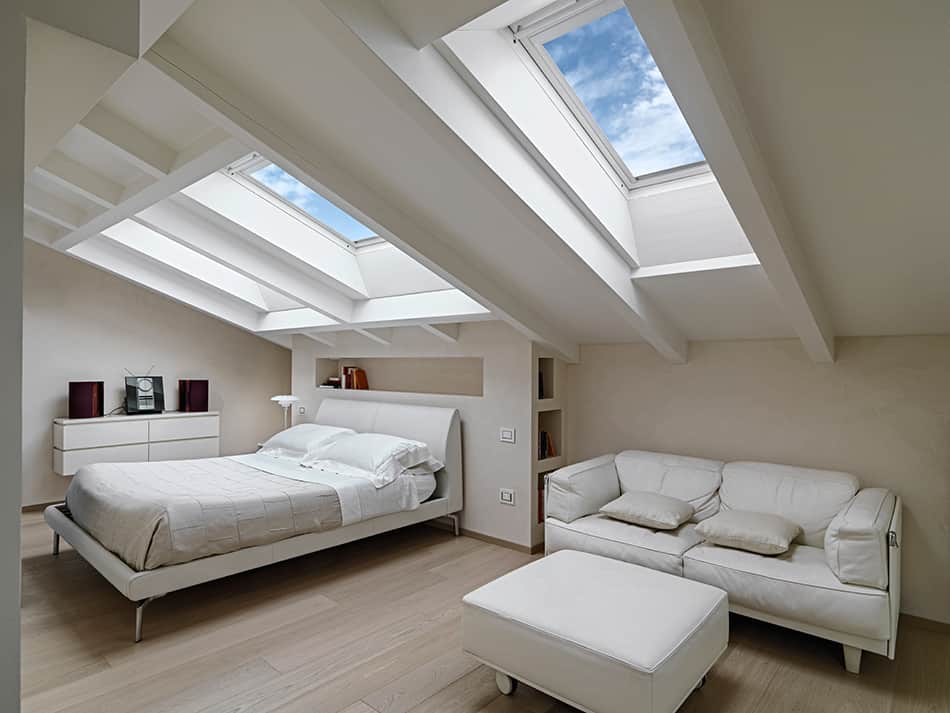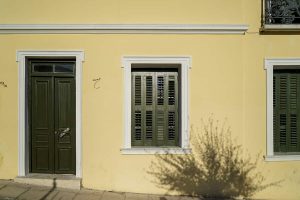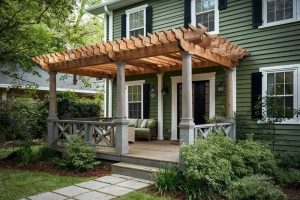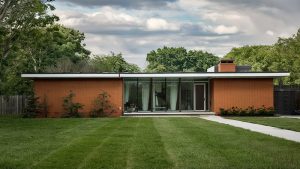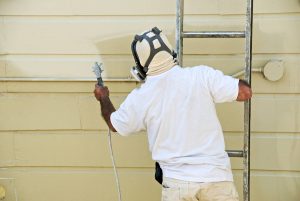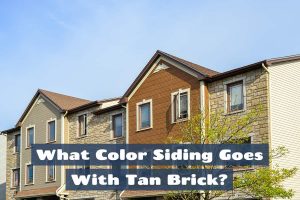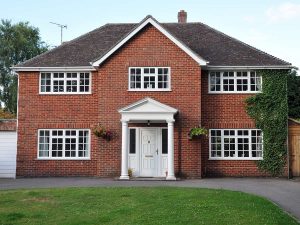Installing skylights in your house can offer some benefits. For instance, they can add natural lighting and ventilation to your room, making it appear larger. For this reason, skylights are suitable for rooms where the walls can’t have windows.
However, installing a skylight can be a bit confusing. The reason is that there are two types of skylights, and you have to pick the best type that is suitable for your home or roof. So, which one is better, a curb or deck-mounted skylight?
What is a Deck-Mounted Skylight?
A deck-mounted skylight is ideal when your rook has a slope of about 14 degrees to 85 degrees. Aside from that, it is attached to your roof by nailing it to the roof itself. As such, this type of skylight has a lower profile with a ton of energy-saving properties.
Because a deck-mounted skylight is closer to the house’s roof, they have better efficiency compared to a curb-mounted skylight. Plus, various flashing kits are now being developed. These flashing kits will improve not only the quality of these units but their energy efficiency as well.
Aside from being energy-efficient, the low profile of a deck-mounted skylight can make your home more visually appealing from the interior to the home exterior. Still, the selling point of this type of skylight is its energy-saving properties, which are important nowadays.
What is a Curb-Mounted Skylight?
A curb-mounted skylight is the most common type of skylight sold in the market, and they are suitable for flat roofs or those with a slope of 14 degrees or below.
Typically, a curb-mounted skylight has a frame made of wood, causing the skylight to stick out. As such, this type of skylight is visible on the exterior.
A curb-mounted skylight comes in various custom sizes; however, its standard size is about two by six feet. By opting for the standard size, you can easily replace it if a problem occurs.
A curb-mounted skylight is a good choice if your roof has a low pitch; however, it is noticeable from the outside. Another downside of this skylight is that it is not insulated, making it less energy efficient compared to a deck-mounted skylight.
If you’re going to choose a curb-mounted skylight, you have to consider one recommendation. To be specific, The National Roofing Contractors Association recommends that you use a curb that allows about four inches of vertical flashing per side.
When installing this skylight on a low-sloped roof, it is best that that flashing should be tall, specifically about eight inches or so. If the curb doesn’t meet this requirement, you need to extend its height to make it taller.
Which is Better Deck or Curb-Mounted Skylights?
In most cases, you cannot choose which type of skylight you can install on your roof. Remember, a curb-mounted skylight is suitable for flat roofs or those with a slope of14 degrees or below. On the other hand, a deck-mounted skylight is best for roofs with a slope of 14 to 85 degrees.
In terms of aesthetics, a deck-mounted skylight has the edge because of its clean look. Plus, they are hidden from the outside of the house. Remember, a curb-mounted skylight has a wooden frame, which makes it noticeable.
Also, a deck-mounted skylight is available in various custom sizes and shapes. As such, you can pick a design that will fit your home’s overall design.
When it comes to energy-saving properties, a deck-mounted skylight is the better choice. Keep in mind that curb-mounted skylights are not insulated; thus, they are not energy efficient. On the other hand, deck-mounted skylights come with flashing kits that enhance their energy-saving properties.
All in all, a deck-mounted skylight is better than its curbed counterpart. Even so, a curb-mounted skylight is still a good choice because it is more cost-effective than a deck-mounted skylight.
Plus, if you need to replace the skylight frequently, the standard size of the curb-mounted skylight is more affordable. Plus, you can easily buy it in your local hardware stores.
The Pros and Cons of Installing Skylights
The Pros
As mentioned, installing skylights has some benefits. For one, they can add natural lighting and ventilation to your room. As a result, your room will appear and feel bigger.
Aside from that, skylights are also beneficial for homes located in colder regions. The reason is that they can bring more sunlight to a room during winter.
As such, they can provide additional heat even without a furnace. Through this, you’ll be able to save some money on utility bills. However, keep in mind that a curb-mounted skylight is not insulated; thus, it is less efficient than its counterpart.
The Cons
Despite providing some benefits, skylights also have disadvantages. One, in particular, is that they can cause fading to your flooring and furniture.
Remember, when your flooring and furniture are exposed to too much sunlight, they may fade and wear down quickly. As a result, you need to replace them sooner.
Aside from that, an improperly installed skylight can also have inverse effects. For example, it can let in condensation or leak, which can cause damage to your room.
Conclusion
As presented, a deck-mounted skylight is better than a curb-mounted skylight when it comes to aesthetics and energy-saving properties. Even so, a curb-mounted skylight is also a good choice, especially if you’re looking for a cost-effective type of skylight.
Plus, the type of skylight you’re going to install will depend on your roof. Remember, a curb-mounted skylight is recommended for flat and low-sloped roofs (less than 14 degrees), while a deck-mounted skylight is suitable for sloped roofs (14 to 85 degrees).
No matter what type of skylight you choose, both can offer some perks, like making your room appear brighter and bigger.
However, they also have some disadvantages. For example, they can fade and wear down your flooring and furniture because of too much sun exposure. So, as much as possible, avoid placing your furniture below a skylight.
